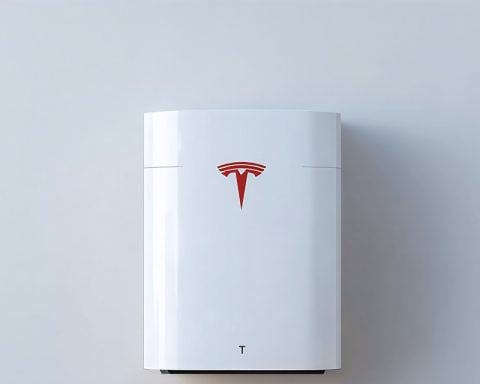- A photographed electric vehicle (EV) charging station was severely vandalized, sparking debate on anti-EV sentiments.
- The destruction impedes progress toward cleaner energy by undermining public confidence in EV infrastructure.
- Despite challenges, EVs produce significantly fewer emissions over their lifetimes compared to fossil-fueled vehicles.
- Innovations and investments in fortified charging stations highlight resilience against vandalism.
- Companies are implementing protective measures like cut-resistant cables and alarms to safeguard charging infrastructure.
- The commitment to developing secure and reliable EV networks signals the continued growth and importance of sustainable transportation.
A silent battlefield lies within a photographed electric vehicle charging station, left humiliated and broken. What should be a symbol of progress now languishes in disrepair, with five out of six plugs heartlessly torn, a single survivor left barely clinging to its purpose. This, captured and shared by a passerby on Reddit, kindled a fiery debate on the shadowy war against greener motoring.
The digital outcry was unanimous: voices echoed in dismay over the irrational destruction. Among the comments lay a hint of truth—some individuals harbor such disdain for the rise of electric vehicles that they resort to violence against the very infrastructure meant to support them.
This incident, frustrating though it might be, serves as a stark reminder: such vandalism doesn’t only infuriate; it hampers progress toward cleaner energy. Charging stations, vandalized and abandoned, threaten the broader adoption of EVs by sowing doubt about their practicality.
Yet, glimmers of hope shine through. The numbers paint a starkly different picture. Despite concerns about battery production, EVs unleash significantly fewer emissions over their lifetimes compared to their fossil-fueled counterparts. And with the earth gulping billions of tons of fossil fuels annually, the burden of unsustainability clearly tips in favor of electricity.
Innovations are emerging on the front lines. Cities invest in fortified charging stations, while companies like ChargePoint arm their units with cut-resistant cables and alarms. The robust build and strategic enhancements aim to deliver a message: EVs are here to stay, unyielding against the tide of vandalism.
In a world hungry for change, the charging network emerges not as a vulnerable target, but as a fortified pillar of progress. The battle may continue, but the momentum is unstoppable.
The Hidden Battle: Why Electric Vehicle (EV) Charging Stations are Under Attack and How to Protect Them
How-To Steps & Life Hacks: Protecting EV Charging Stations
1. Community Engagement: Increase awareness and foster a community approach to protecting charging infrastructure. Local communities can set up watch programs or collaborate with law enforcement to monitor these sites.
2. Use of Technology: Install surveillance cameras and motion detectors around charging stations. Advanced systems can alert authorities immediately upon detecting suspicious activity.
3. Secure Design Enhancements: Opt for heavy-duty, vandal-resistant materials, and designs with features like cut-resistant cables and reinforced enclosures, as implemented by companies like ChargePoint.
4. Regular Maintenance Checks: Schedule frequent inspections and maintenance to rapidly address any damage and prevent prolonged downtime, which can deter vandal activities.
Real-World Use Cases and Market Trends
Electric vehicles (EVs) are steadily gaining traction worldwide. Countries like Norway and China are at the forefront, with EV penetration rates significantly higher than the global average. According to the International Energy Agency (IEA), EV sales accounted for nearly 10% of global car sales in 2022, and this trend is expected to escalate with growing environmental awareness and policy support.
Many cities are implementing comprehensive strategies to expand and protect their EV infrastructure. For example, Amsterdam and San Francisco are investing in smart charging solutions that proactively manage electricity consumption and integrate renewable energy sources.
Controversies & Limitations
Despite their increasing adoption, several challenges persist:
– Vandalism and Theft: As observed, attacks on charging stations can discourage potential EV users.
– Initial Costs: High setup costs remain a barrier for individual property owners and smaller municipalities.
– Range Anxiety: Although improving, concerns about driving range and insufficient charging infrastructure still linger.
Features, Specs & Pricing
Standard EV charging stations can vary widely in their features. Here are some general specifications:
– Level 1 Chargers: Use a 120V AC plug, charging about 3-5 miles per hour. Suitable for home use.
– Level 2 Chargers: Provide 240V AC plugs and can charge vehicles at approximately 10-60 miles per hour.
– DC Fast Chargers: Offer rapid charging, providing about 60-80 miles in just 20 minutes. Ideal for urban centers or highway stops.
Pricing can range from a few hundred dollars for basic home chargers to several thousand for commercial-grade models with multiple ports.
Security & Sustainability
Companies continue to improve security to thwart vandalism and theft. Fortified structures, tamper-proof designs, and real-time monitoring technologies are trends gaining momentum. On sustainability, the lifetime emission of EVs remains significantly lower than fossil-fueled vehicles, even when accounting for battery production impact.
Actionable Recommendations
– Invest in a Smart Charger: If you own an EV, consider a Level 2 home charger equipped with smart features for efficient charging management.
– Community Awareness Campaigns: Start or participate in local initiatives to raise awareness about the significance of EV infrastructure and its protection.
– Stay Informed: Keep up with industry developments that impact infrastructure reliability and the EV market: IEA, Bloomberg Green.
As EVs continue to revolutionize transportation, ensuring stable, reliable, and secure charging options is essential. The industry’s innovative approaches to infrastructure resilience and security signal a steadfast commitment to overcoming current challenges.












